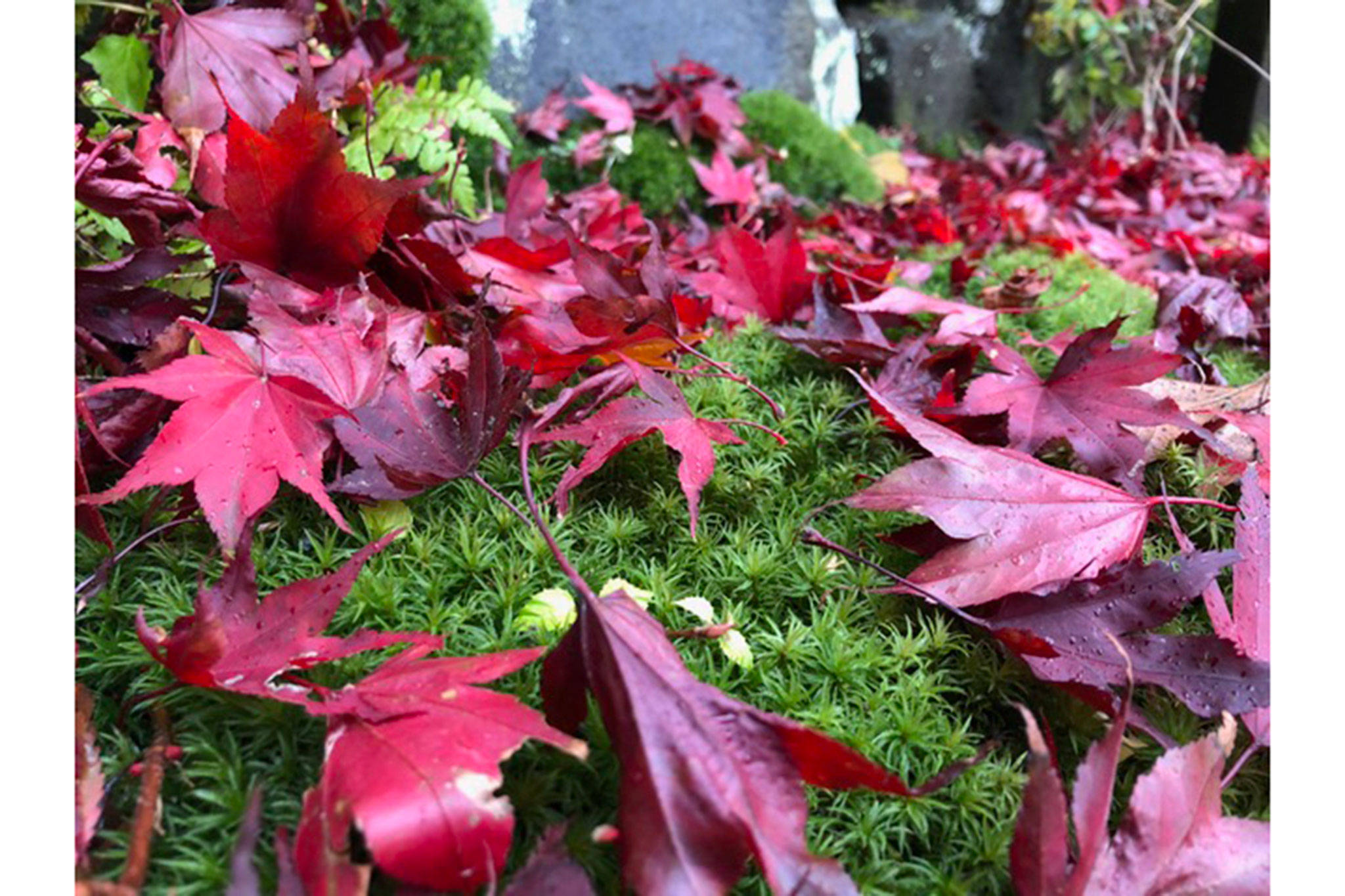By Steve Smith
It’s that time of year when gardeners have to decide how they are going to manage their piles of leaves. Over the years I have observed two distinct groups. There is the fastidious camp that is constantly collecting and removing leaves as fast as they fall. Then there is the al natural camp that prefers the more passive approach of letting the leaves fall where they may, just like Mother Nature does. But before you decide which camp you want to be in, let’s talk about the importance of leaves in the garden.
Leaves are a huge resource for the garden. They are rich in nutrients, can act as a blanket of insulation, a hiding place for worms and bugs – which in turn provide a food source to our feathered friends – and finally, a barrier to winter weeds. Fallen leaves are a vital link in the cycle of nature, that over time build soils, prevent compaction from the driving rains, and help to minimize erosion on sloped ground. Nobody in their right mind would think of removing leaves from the forest floor, yet we do it all the time in our gardens.
If you are of the “rake-em-up” camp, you need to remember that by removing your leaves you are depriving your soil of this replenishing opportunity and therefore it is your responsibility to find some other way to replenish it yourself. You are going to have to bring in some compost and spread it on your beds once you have finished raking all the leaves. If on the other hand you are of the “let-em-lie” camp, you will at least need to “organize” your leaves so they are not smothering your lawn or evergreen shrubs and perennials – plants that retain their leaves all winter long that need to breathe to function and see the light of day once in a while. Your leaves can be several inches deep, as long as they are not covering any foliage.
In my garden I have beds where I herd most of my leaves for the winter. The leaves stay there until mid-February, at which time I rake up what is left and put them in a compost pile. Removing the leaves at that time opens the soil to the air (and hopefully some sunshine) and helps to wake up the beds. By late April, after my plants have started to grow, I will apply some organic fertilizer along with a new layer of compost, and I am good for the season.
I have other beds where I do like to remove all the leaves because I want to plant bulbs and pansies, and leaves just get in the way. In these beds I will apply an organic fertilizer at the time of planting and if needed, some additional compost to fluff up the soil and to act as a mulch for the winter. These amendments take the place of the removed leaves and help to keep my soils healthy.
Overall, we need to remember that leaves are a rich source of nutrients for our gardens and are an asset, not a liability. If you can’t stand the littered look, then at least top dress your beds with a layer of finished compost for the winter. If you prefer the natural look and are inclined to leave the leaves, then remove them from the lawn and any evergreen plants. You can decide in spring if you want to tidy up any more or just let nature take its course.
Steve Smith is owner of Sunnyside Nursery in Marysville and can be reached at info@sunnysidenursery.net.
P.S. – Sunnyside will be hosting a free class, ‘The Beauty Of Hellebores’, Nov. 3 at 10 a.m. For details go to www.sunnysidenursery.net/.


